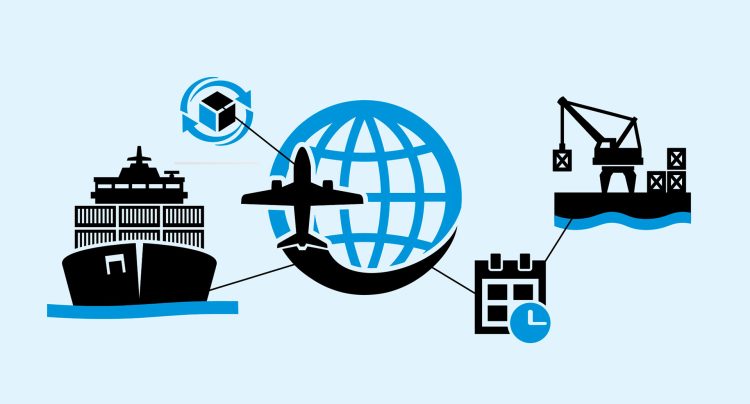Emerging markets are quickly becoming the central force behind global trade. These economies, often characterized by rapid growth, industrialization, and improving infrastructure, are disrupting the long-standing dominance of developed nations. This shift in the global economic landscape is not just a passing trend, but a monumental transformation with far-reaching implications for businesses, governments, and global consumers.
In this article, we will explore how emerging markets are influencing global trade, focusing on key factors such as economic growth, technological innovation, trade policies, and consumer behavior. We’ll also delve into the challenges these markets face and how they are creating new opportunities and risks for businesses worldwide. By the end, you’ll have a clearer understanding of the role emerging markets play in reshaping the future of global commerce.
The Rise of Emerging Markets: A Brief Overview
Emerging markets refer to countries that are transitioning from low income or developing economies to higher-income status. These nations typically exhibit rapid growth rates, improving infrastructure, and increasingly sophisticated industries. While the term “emerging market” may sound like a new phenomenon, it has been in use for decades. However, the scale and speed at which these markets are growing today have transformed them into key players in the global economy.
Countries like China, India, Brazil, Mexico, and South Africa have already solidified their roles as emerging market powerhouses, while other nations such as Indonesia, Vietnam, and Nigeria are quickly catching up. Collectively, these economies represent a growing share of global GDP, trade, and investment flows.
How Emerging Markets Influence Global Trade
1. Economic Growth and Trade Volume
One of the most significant factors driving the influence of emerging markets is their high economic growth rates. According to the World Bank, emerging economies have been growing at a faster pace than their developed counterparts for over a decade. While developed economies such as the U.S., Japan, and the EU grew at an average rate of about 1.5% annually over the past several years, emerging markets have been expanding at 4% or more, driven by strong industrial output, increasing consumer demand, and substantial investments in infrastructure.
As these economies grow, their demand for imports increases. More importantly, they also become major exporters of goods, raw materials, and services. China, for example, is now the world’s largest exporter, with a massive manufacturing sector that supplies goods to markets all over the globe. India, likewise, has become a dominant force in global services trade, particularly in information technology and business outsourcing.
Emerging markets are also diversifying their exports. While raw materials and low-cost manufacturing were once the staples of emerging market trade, nations like Brazil and South Africa are now focusing on higher-value goods, including advanced machinery, automobiles, and electronics.

2. Expanding Global Supply Chains
Another significant way that emerging markets are shaping global trade is by expanding and diversifying global supply chains. As costs rise in developed countries and labor costs in emerging economies remain competitive, companies are increasingly looking to emerging markets for both raw materials and finished products.
Take the case of China’s role in global supply chains. As the “world’s factory,” China has become a hub for the assembly of everything from consumer electronics to automotive parts. However, this dynamic is not limited to China. Countries like Vietnam, Bangladesh, and Mexico are also becoming increasingly integrated into global supply chains, providing alternative sources of low-cost manufacturing.
This shift is also driving the expansion of cross-border trade agreements. As nations in emerging markets become more integrated into the global economy, regional trade agreements like the Comprehensive and Progressive Agreement for Trans-Pacific Partnership (CPTPP) and the African Continental Free Trade Area (AfCFTA) are gaining traction.
3. Technological Innovation and Digital Trade
The emergence of new technologies is another key way in which emerging markets are shaping global trade. These countries are not just adopting existing technologies but are often leapfrogging traditional development stages, creating entirely new industries and disrupting established markets.
For example, Africa’s rapid adoption of mobile payments technology (e.g., M-Pesa in Kenya) has transformed financial services in the region and created new opportunities for digital trade. Likewise, India’s burgeoning tech startup ecosystem has made it a leader in outsourcing software development, cloud computing, and artificial intelligence services.
Additionally, emerging markets are seeing rapid digitalization, with more consumers gaining internet access and turning to e-commerce platforms. Companies like Alibaba in China and MercadoLibre in Latin America are reshaping how goods are bought and sold globally, bringing new e-commerce opportunities to regions that were previously underserved by traditional retail models.
4. Changing Consumer Behavior
Emerging markets are not just producers of goods and services—they are also evolving into major consumer markets. The rapid growth of the middle class in countries like China, India, and Brazil has dramatically increased demand for a wide range of products, from luxury goods to consumer electronics.
Increased disposable income, rising standards of living, and more access to credit have made emerging markets particularly attractive to global businesses looking to expand their customer base. U.S. companies like Apple and McDonald’s, for example, are targeting emerging markets as growth areas, particularly as markets in the West become saturated.
In addition, emerging market consumers are becoming more discerning, looking for higher-quality products, brands they trust, and personalized experiences. This has spurred innovation in product development, marketing, and customer service, as companies strive to meet the evolving demands of these new global consumers.
Challenges Facing Emerging Markets in Global Trade
Despite their rapid growth and increasing influence, emerging markets face significant challenges in their efforts to shape global trade. These challenges range from infrastructure limitations to political instability and trade barriers. Let’s explore some of these challenges.
1. Infrastructure Bottlenecks
One of the most significant hurdles for emerging markets is their often underdeveloped infrastructure. While countries like China and India have made tremendous strides in infrastructure development, many emerging markets still face challenges related to transportation, energy supply, and telecommunications. Poor infrastructure increases transaction costs and slows down the flow of goods and services across borders, limiting their ability to fully capitalize on global trade opportunities.
For example, in sub-Saharan Africa, poor road networks and inefficient ports make it difficult for goods to reach international markets in a timely manner. Addressing these infrastructure deficits will be crucial if emerging markets are to fully integrate into global trade.
2. Trade Barriers and Protectionism

Although emerging markets have become increasingly open to international trade, they still face significant barriers. Tariffs, non-tariff barriers, and export restrictions can hamper the free flow of goods and services, particularly in industries that are key to a country’s development. In some cases, emerging market governments have implemented protectionist policies to shield nascent industries from foreign competition, slowing the pace of trade liberalization.
For instance, India has raised tariffs on mobile phones and electronics in an attempt to boost domestic manufacturing. Similarly, Brazil has imposed taxes on certain imported goods to protect its domestic industries. While these policies may have short-term benefits, they can also lead to trade disputes and retaliation, which can disrupt international trade.
3. Political Instability and Governance Challenges
Political instability is another major concern in many emerging markets. While countries like South Korea and Singapore have maintained relatively stable political environments, others—particularly in parts of Africa, Latin America, and the Middle East—have experienced significant political volatility. This instability can lead to economic uncertainty, discourage foreign investment, and disrupt trade flows.
Furthermore, issues like corruption, lack of transparency, and weak rule of law can undermine the ability of emerging market governments to establish fair trade practices and create a stable business environment. International businesses often face high levels of risk when operating in these markets.
Emerging Markets and the Future of Global Trade
As we look toward the future, it’s clear that emerging markets will continue to play a pivotal role in shaping global trade. Their expanding consumer bases, competitive advantages in manufacturing, and leadership in digital innovation will drive new opportunities for businesses around the world. However, overcoming challenges such as infrastructure limitations, political instability, and protectionism will be essential for these markets to realize their full potential.
The increasing interconnectedness of global trade networks, the rise of digital technologies, and the growth of consumer demand in emerging markets present enormous opportunities for businesses willing to adapt to the changing dynamics of international trade. Companies that are able to tap into the potential of emerging markets, while navigating the risks involved, will be well-positioned for success in the coming decades.
Conclusion
Emerging markets are not just reshaping global trade—they are reconfiguring the global economy itself. With their growing economic influence, expanding consumer markets, and leadership in technological innovation, these nations are creating new opportunities and challenges for businesses across the globe.
As businesses and policymakers around the world adjust to these changing dynamics, it will be essential to embrace the full potential of emerging markets while addressing the challenges they face. By doing so, the world can look forward to a future where global trade is more diverse, dynamic, and inclusive.

















































